Rivers give rise to cities, it is said. “Which city do you come from?” might well have been “which river do you come from?” in an older age. Pune, and Punekars, come from the Mula-Mutha.
A city seasoned by a lakh and more years of human settlement, Pune which went by earlier names of Punyavishay and Punyawadi was – and has been – on the banks of a river of confluence. Five rivers – Ram, Mula, Mutha, Pavna, and Dev – merge to become the Mula-Mutha in Pune, the waters of which have nourished the city for centuries. The river, fed by the abundant forests of the Western Ghats, was used by Pune’s first settlers for transport, fishing, riverside farming, and trade, and it played a role in the city becoming an important cultural and political centre of the Deccan plateau.
But, as with the city, so with the river – only fragments of the previous glory linger. The Mula-Mutha has been steadily reduced to a large sewer, randomly concrete-fenced, prone to flooding and clogging with the city’s waste; the burden on the river has been worsened with construction plans of the riverfront project – euphemistically called the Riverfront Rejuvenation Project – helmed by the Pune Municipal Corporation.
The revered river and flood fury
The Mula-Mutha was not always this way. Till 1961, people would jump off Lakdi Pul (today’s Sambhaji bridge) in swimming competitions. The flow was so strong that only the strongest swimmers resurfaced a few hundred metres away near the Omkareshwar temple. The British used it for game, fishing, boating and constructed the Bund Garden.
Every ruler revered – and used – the Mula-Mutha when in power. The Yadav dynasty built multiple temples along the river in the 8th century, Chhatrapati Shivaji’s reign saw the flourishing of the present-day riverine Kasba Peth. After Pune’s urbanisation began under the Peshwas, the Mula-Mutha had a golden period from 1761 to 1961. The river warbled along, the city evolved and expanded. When Panshet and Khadakwasla dams burst on July 12, 1961, unleashing large-scale destruction along the river’s banks, Pune and the river changed forever.
To what extent can construction encroach into a river? There are levels at which a river floods annually during the monsoon and a level beyond that where the once-in-a-century floodwater can reach. Construction in Pune, as in other Indian cities, has gone well beyond these levels into what used to be the river banks with debris turning into layered mounds, and the primordial mound sloping into the river itself thereby reducing its width. Besides this, garbage and rubble are routinely deposited on these mounds increasing the volume of that’s washed into the river, leading to sedimentation.
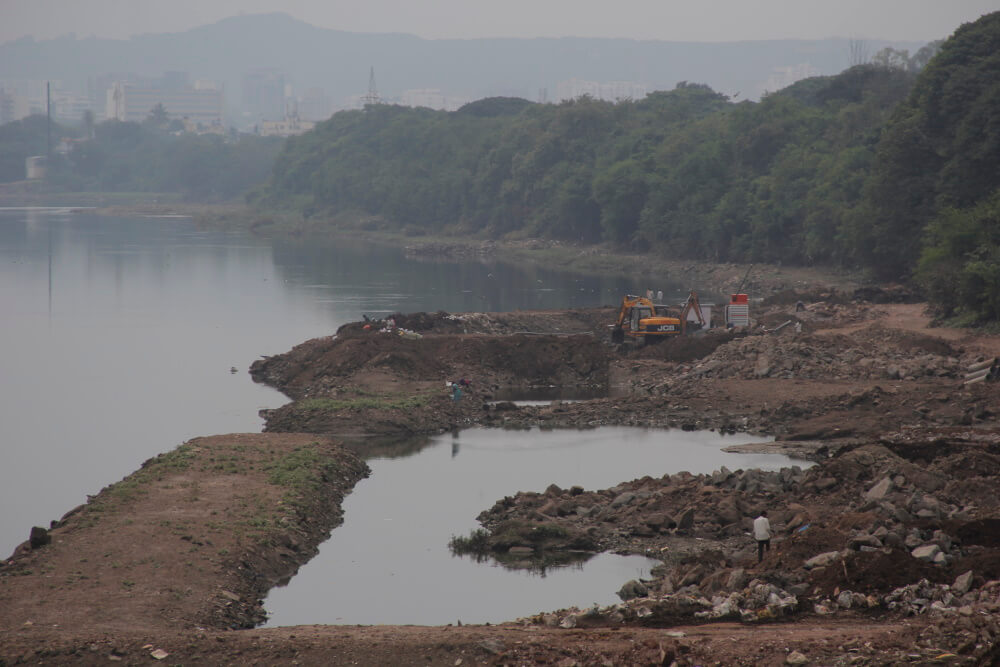
Photo: Ishan Sadwelkar
The river needs to be cleaned and rejuvenated. Instead, under the garb of rejuvenation, it is undergoing a “riverfront development” – an infrastructure project – in which its banks are being cemented which will eventually result in a narrower river. The digital tenders for this project promised promenades like on the rivers Tiber or Seine but in an already shrunken river, construction on its banks is an invitation for environmental and human disaster. In fact, international cities such as Seoul in South Korea that had riverfronts are breaking them to restore the river.
The 44-kilometre riverfront project is pegged to cost Rs 4,727 crore but it is not the prohibitive cost alone that is of concern; the project could lead to the destruction of one of the few natural stretches of the river – Bund Garden, Sangam – and the gradual vanishing of the flora and fauna in the Mula-Mutha’s ecosystem. The riverfront project primarily comprises channelising and converting soil banks into concrete canals with walls that rise 30 to 40 feet around the water.
This, with immediate effect, cuts off the river from the land around it and the stakeholders. While there is no doubt that floods will continue, and as seen in Ahmedabad’s failed riverfront, floodwater will rise and permeate the city. Further, to synthetically or artificially show ‘still’ water, barrages will be built before and after the confluence point of the Mula and Mutha which will lead to water stagnation. This, in turn, will constrict oxygen and deplete the groundwater threatening the aquatic species. The maintenance of the riverfront will be at a huge cost – financial borne by the taxpayers and ecological which will impact the city for decades.
Reduced to a polluted sewer
Before the Mula-Mutha enters Pune from its western origins, it is abundant with lush landscapes and sparkling water where resident and migratory fauna, avifauna, fish, various plants and insects inhabit the banks. Once it leaves Pune behind, the river seems to recover a little from the onslaught it faced in the city and harbours a more diverse ecology than when it runs through the city.
However, in Pune, it is suffocated and reduced to a large sewer with a tell-tale stink. The city’s domestic waste, industrial waste, raw sewage and religious waste are directed into it. Under the Sangam bridge and Kalyani Nagar bridge, methane bubbles and surf are regular sights, plastic and cloth rags stuck on rocks and overhanging branches are a common sight. Black-winged stilts, one of the few birds still spotted in the Mula-Mutha, stand as ecological markers of pollution with their slender pinkish red legs wading through blackish-green water. The once bird-populated banks and islands within the river have only a few species such as spot-billed ducks, the occasional heron or pair of storks, sandpipers, a few cormorants, and black kites.
Encroachments and narrowing of the riverbanks have reduced the carrying capacity of the Mula-Mutha. Floodwater over the embankments cause severe damage – the 2019 floods led to 25 deaths and damages of over Rs 200 crore. At the Khadakwasla dam, 90,000 cusecs of water were released in 1997 and 67,212 cusecs in 2011 – the same flood level had been reached in both cases which shows the reduced capacity of the river. In 2019, the flood line was breached at 45, 474 cusecs only and it is likely that it will be breached with less water in the future causing floods in the city.
The Ministry of Environment, Forests and Climate Change (MOEFCC) forecasts that Pune will have increased precipitation in the future but the rain spells will be in shorter and more concentrated bursts instead of an even rainfall during the season. Considering that Khadakwasla can release 1,00,000 cusecs of water, when paired with intense rainfall, it could mean further devastation. The Intergovernmental Panel on Climate Change (IPCC) Report 2021 also outlines that coastal and river floods in India will see a marked increase.
The urgency – and priority – is to secure flood drainage into the Mula-Mutha and limit the damage from rainfall and rising floodwater; not to ‘beautify’ the riverbank. Constructing a multi-crore riverfront by beautifying, essentially constructing, over a polluted and dying river is like buying expensive lights for a house without electricity. It defies logic and shows misplaced priorities. The priority should be to streamline sewage and water treatment, and cleaning up the river to restore its flow, before attempting any cosmetic infrastructural or beautification experiments.
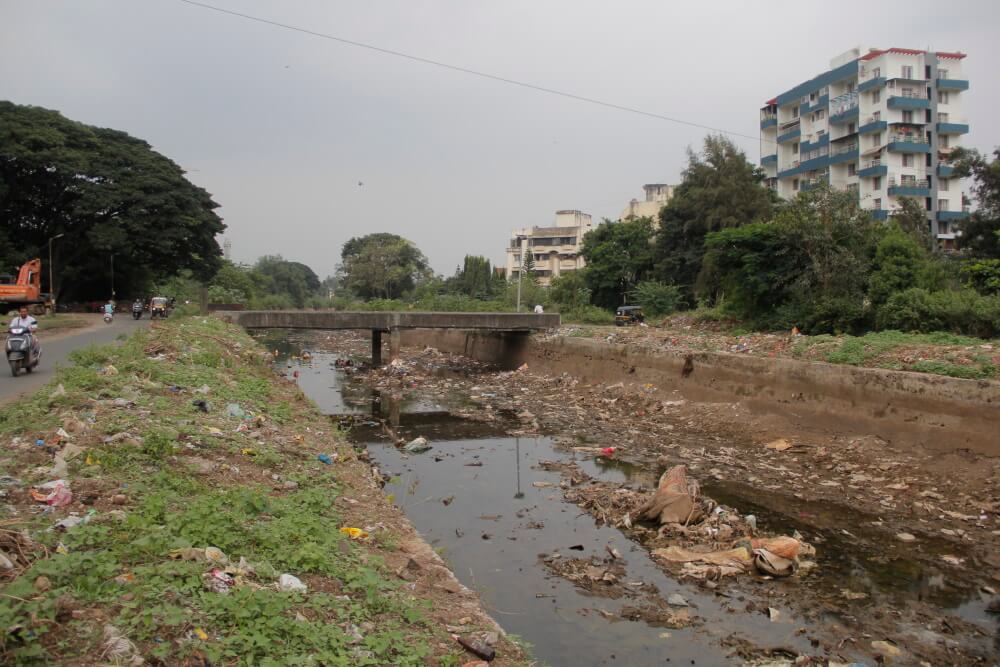
Photo: Ishan Sadwelkar
The ecology of the river
Building a riverfront beautification project for people who have little or nothing to do with the river has to be termed an elitist aspiration. The Mula-Mutha supports indigenous people and livelihoods – stakeholders who will be cut off but whose views are rarely sought.
The river is not only a sewer which is to be turned into a promenade; its banks provide a rare space for Dhangars and cattle owners to graze their livestock. The river’s slower flowing pockets and stream confluences attract marginalised communities who gather worms, later supplied as fish food to various markets. A small number of fisherfolk still catch fish. These folks will lose an important human connection with the river if its banks are concretised.
Teeming with over a hundred species of fish till about a century ago, the river has seen a drastic decline. Over 60 species were found missing by the early 2000s including celebrated ones like the Mahseer leaving only the hardy or invasive fish like Tilapia around. Fish, both fresh and dried, have been an important part of the old city’s diet, especially for labourers and natives.
Other visual markers of ecological decline in the Mula-Mutha too are obvious – the slow absence of spoonbills, the flocks of herons and storks which moved to other parts, and a contrasting difference in tree species seen within and outside the city along the river. It is hard to imagine that the river was once a migratory and watering site for cattle, elephants, and carnivores. Then, there is water hyacinth, another blow to the Mula-Mutha’s biodiversity. Hyacinths, regular sights in waterbodies across India, point to human interference responsible for the loss of aqueous volume and a shift in the geography of the waterbody or wetland. The water hyacinth is a signifier of excessive organic waste, a hyacinth-filled river is a loud alarm for urgent sewage and water treatment.
Despite being on the banks of an once-thriving river, Pune has a peculiar problem with water consumption – over supply as well as over-consumption which masks an unequal distribution of water. Some parts receive only two hours of water supply while others have more than necessary; excessive consumption means more sewage. Pune’s organic and industrial sewage is now well beyond the permissible limits.
The biological oxygen demand of the river, an indicator of organic pollution, is over 30 mg/l, more than 10 times the permissible limit for bathing. The sewage generated by the city’s 3.7 million inhabitants is nearly 800 million litres a day; less than 40 per cent of this is untreated and mixes with treated sewage. All of this enters the river and percolates into the aquifers.
The twin problem leading to floods
The term ‘floods’ evokes a negative connotation. Floods are seen as destructive, a problem, when in fact they are a natural course of a river or stream, much like snow is to a glacier. Floods are essential to a river’s lifecycle; they rejuvenate, cleanse and enliven a river. The riverbanks, islands, and neighbouring plains are flushed out and enriched with alluvial soil making them naturally fertile.
The flowing or overflowing water oxygenates the river while the soil along the river acts as a natural sponge to lessen the blow of the flood and absorb nutrients which in turn feed the river’s biodiversity. Along the banks of the Mula-Mutha, 2000-year-old paddy fields and vegetable farms have been found. This natural flood-related ecosystem has come to mean disaster and destruction for people along the Mula-Mutha because encroachments and untreated sewage have played havoc with the river’s natural cycle.
The dams near Pune such as Temghar, Khadakwasla, and Panshet have ample water supply; logically, once a dam is full, water is released. A dam is presumed to fill up during the monsoon but Climate Change has meant gradual changes in air pressure, emergence of heat pockets, and delays in the monsoon. This has resulted in dams reaching their optimum full capacity at irregular times, usually after September.
If an untimely heavy rain simultaneously visits, then Pune has to deal with intense rain and water released from dams. A poorly planned network of concretisation which disrespects the boundaries of the river does not help the city at all.
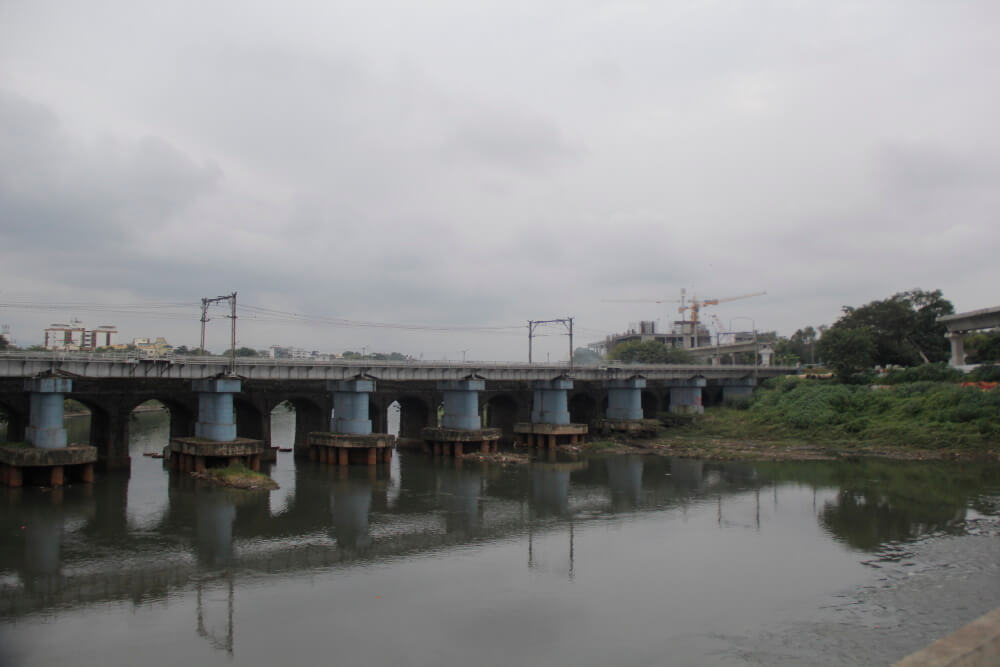
Photo: Ishan Sadwelkar
The river-hills matrix
On the periphery of Pune, hills abound but have been exploited in the rush to urbanise. A city blessed with hills and a river is naturally inclined for rainwater absorption, the water slowly seeping its way towards the riverbed forming streams that feed into the body of the river, and harmlessly going about its business.
However, Pune has witnessed a spate of construction – or over-construction – in the name of urbanisation. The large and tall residential or commercial structures have cut through hills or have been built on hills that were home to old trees and absorbent grasslands. This vanishing of hills is evident across the Mumbai-Pune Expressway near Pashan and Bavdhan. Areas such as Dhankawdi and Parvati have rolling hills, often interconnected. The crest, or dividing line of these hills, has been constructed upon and historical streams that once connected to the river have vanished.
When rainwater during heavy rain hits the hills, there is an estimated five to ten per cent runoff because the soil absorbs the water, but when soil is replaced with concrete the runoff has been found to be a staggering 60-70 per cent. Floods then inundate the city; people and cars are stranded or, worse, washed away. With the river’s carrying capacity hampered and the hills denuded, the rainwater gathers force causing damage downhill. The river has thus become a threat to the city.
The way forward
What the Mula-Mutha – and Pune – needs is an increase in the soil cover around the city for which regulating construction in the hills is paramount, treatment of all sewage, curbs on dumping construction debris and non-biodegradable waste, regulating immersion of idols and religious waste among other steps. This calls for a change in the attitude of Punekars towards the river itself.
The riverfront project is likely to exacerbate the problems with the river. It will apparently narrow down the river as the embankments are built over land taken – reclaimed – from the riverbed or floodplains in contravention of the city’s environmentalists’ who have repeatedly called for “care to be taken to not reduce the cross-section of the river(s)” when the project took off six years ago. A report by the South Asian Network on Dams, Rivers and People claimed that the state authorities had greenlighted the project even in the absence of key information and had ignored the basic elements of the project which would damage the river and its ecosystem.
Environmentalists and civic activists have taken the issue to court and National Green Tribunal (NGT) but there has been little respite. The first strike has been made this year, there is reason to dread the “rejuvenation” of the Mula-Mutha.
Meanwhile, there is a lot that can be done: the municipal corporation can adopt Climate Change-informed policies to reverse the damage to the river and evolve a better protocol between different agencies to handle the flood waters when the river swells, a city policy which limits or regulates constructions on the hill slopes, an independent study of hill topography and natural flow spots so that construction here can be discouraged, immediate stop to all construction work in potential flood areas, and for Punekars to emotionally reconnect with the rivers to build positive action.
Ishan Sadwelkar is a filmmaker, writer, and researcher who has explored and extensively written about the city. His written work has featured in national publications. An assistant director on films and a documentary filmmaker, he combines his passion for studying culture, heritage, food with his great love of nature.
Cover Photo: Ishan Sadwelkar

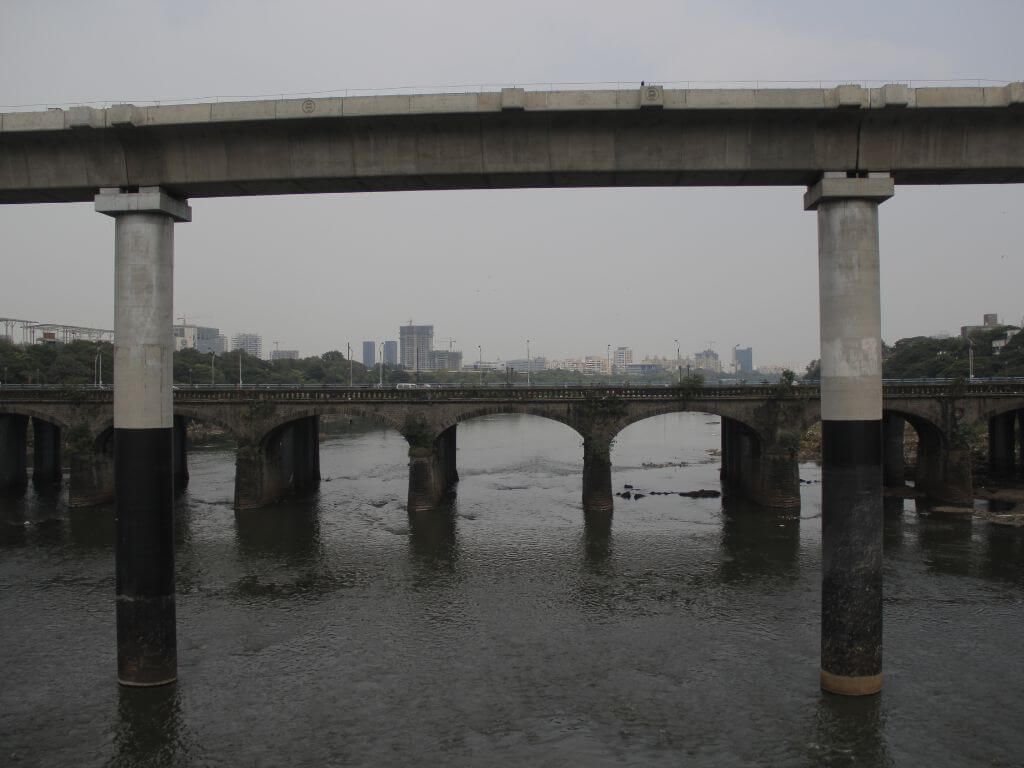
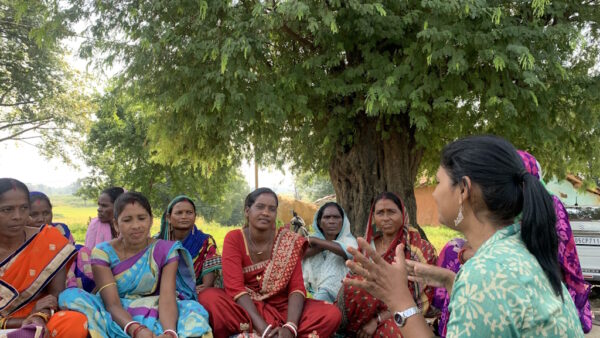

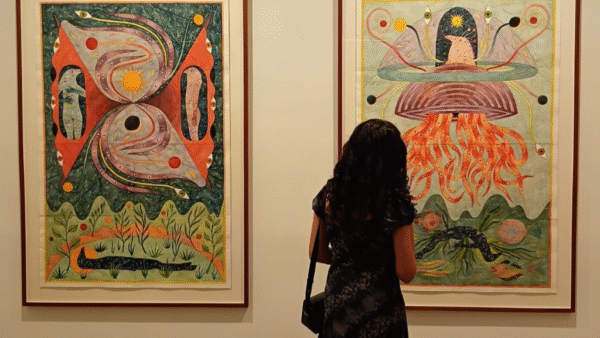
There is 1 comment
An excellent article, voicing deeply felt concerns of many Punekars.
If we say we are from Pune, we should be calling an immediate halt to the thoroughly misplaced Plan for Rejuvenation of the Mula-Mutha.
With a humungous kitty of some 4000/-+ crores to spend, this could be utilized for all the positive actions that Ishan Sadwelkar suggests at the end of his article.
WAKE UP, PUNE!